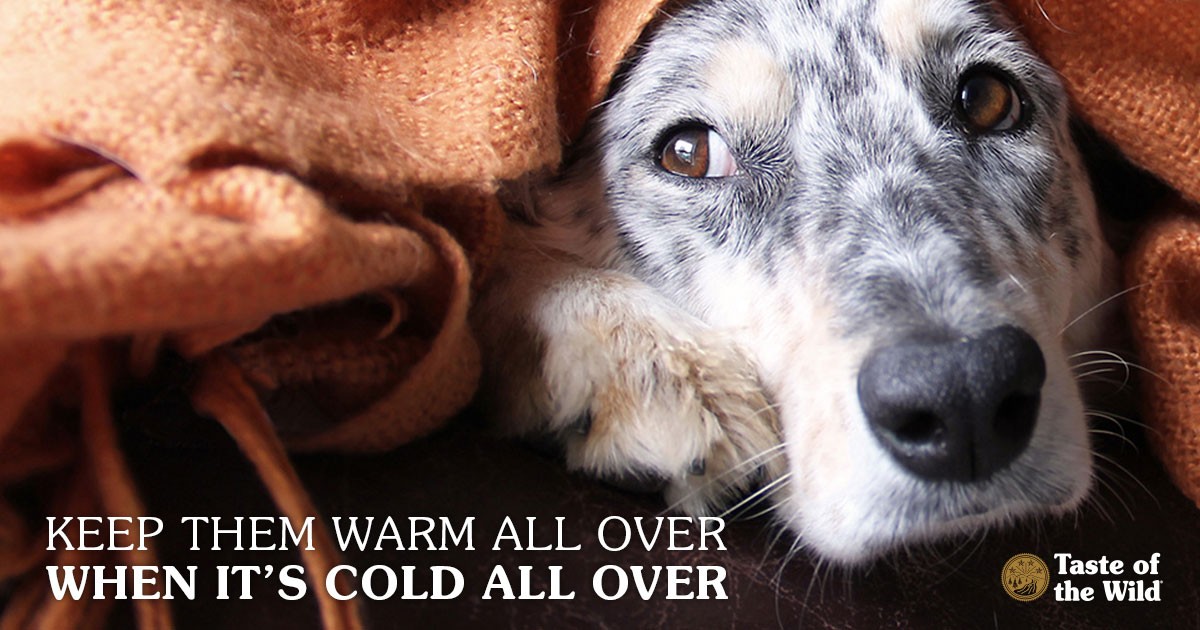Winter is hard for everyone, but it can be especially rough on pets. While people typically bundle up when facing the elements, we often forget that our dogs and cats don’t have the luxury of donning waterproof boots, warm hats and toasty mittens without a little help. This isn’t a huge problem for healthy pets; they’re built to be outside, after all. But pets with certain health conditions can have an even tougher time than usual in cold, wet weather.
Arthritic Pets Need a Little Extra Care
Just as in humans, cold weather can exacerbate arthritis in dogs and cats, making them stiffer and achier than usual. Whether your dog or cat has already been diagnosed with arthritis or you suspect they may have it, talk with your veterinarian. He or she can verify the diagnosis and provide other tips to help your pet stay comfortable over the chilly winter months, including pain medications, weight control, low-impact exercises, supplements and other health care options. So what else can you do to help keep your creaky pet feeling toasty when the winds of winter howl outside your window?
Be warm inside: Layering an extra wool blanket in your pet’s bed can help provide additional warmth (and cushion arthritic joints). In general, inserting hot water bottles in your pet’s bed should be avoided because they can burn skin. And although many commercial pet beds are available with heating elements, avoid those with electric wires that can be problematic if the pet chews on or wets the bed. If you do find a pet bed with a safe heating element, it’s still a good idea to layer a towel or blanket between the bed and your pet to protect the skin from potential burns.
Stay warm outside: It’s not hard to find pet sweaters and coats that are warm and fashion forward. Look for comfortable clothing that doesn’t bind or restrict movement, and doesn’t include bows, buttons or buckles that may be chewed off and accidentally swallowed. Booties can help keep paws dry on walks through snow, sleet and ice. And if your arthritic dog is really tolerant, some booties offer additional traction to help prevent slipping on hardwood or tile floors indoors.
Keep that blood pumping: Even when the temperatures nosedive outside, it’s still important for pets to get some kind of daily exercise. For arthritic dogs and cats, exercise can help keep their muscles toned and help preserve joint flexibility and range of motion. When it’s too cold to venture outside, consider playing fetch inside. Laser pointers can be a great source of entertainment so pets won’t even realize they’re running and stretching in all the fun. Food puzzles are another way to help pets use their minds and muscles at the same time.
Hypothyroidism and Other Circulation Issues
Some health conditions can make it harder for pets’ inner thermostats to regulate body temperature. For example, dogs with uncontrolled hypothyroidism (low thyroid hormone) and pets with heart conditions and poor circulation may have difficulty staying warm. They tend to seek heat and will often curl up near heat registers and fireplaces. Naturally, pets with these issues may need a little special care when it gets chilly outside. The important thing is to watch for signs of extra discomfort in the cold, because it may signal a bigger issue.
That said, just because your dog follows the warm patches of sunlight around the room doesn’t mean he or she has hypothyroidism or another issue that affects circulation. But if your pet seems to be cold intolerant and displays other signs of hypothyroidism, such as weight gain, lethargy and hair loss along the flanks and/or tail, it’s time to visit your veterinarian. After diagnosis, treatment with thyroid supplements can help your pet better regulate his or her body temperature and even give your pet more energy.
As with arthritic pets, it’s important to keep these afflicted pets warm at all times, and all of the rules also apply here. Pad their beds with blankets and bundle them up when they go out into the elements. Warm-up exercises are extra important, because they get the blood pumping, which will help keep them warm from the inside out.
Engage in Heartwarming Activities No Matter What
If you’re still wondering what you can do to help your pet this winter, talk to your veterinarian. He or she can offer additional suggestions and tips for your pet’s specific health condition.
Of course, winter is also the perfect time for snuggling. So why not make room for your dog or cat on the bed or couch with you? That way, your pet can cuddle close and you’ll both stay warmer.
The information in this blog has been developed with our veterinarian and is designed to help educate pet parents. If you have questions or concerns about your pet's health or nutrition, please talk with your veterinarian.

